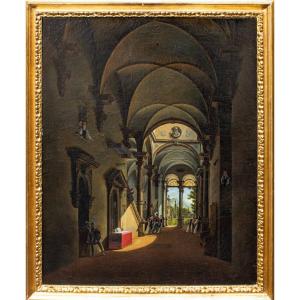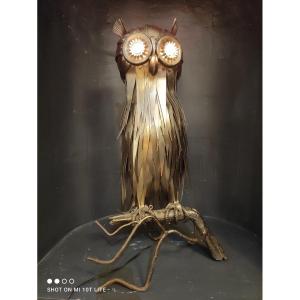Bust of a lady
Wax, 36x32.5 cm
The use of making wax figures was very common, since ancient times, among the Greeks and Romans, and, as far as we have less evidence, also among the Egyptians and the peoples of Asia. In the Middle Ages and in modern times, wax was used by sculptors to model figures or objects to be melted into metal, to sketch works to be developed then in larger proportions, finally as a real sculptural material to melt or mold figures all round or bas-reliefs. Many wax sketches have been preserved, including by famous artists: Michelangelo, the David (Florence, Galleria Buonarroti) and several other figures, the Cellini’s Perseo (Florence, National Bargello Museum), that of Hercules and Caco by Baccio Bandinelli (Berlin, Kaiser Friedrich Museum), those of Ferdinand I de' Medici (Berlin, Kaiser Friedrich Museum) and two reliefs of the Passion of Giambologna (London, Victoria and Albert Museum). As a real sculptural material, the wax was mainly used for portraits, both for funerary figures that were exhibited during the honors given to the remains of kings or other illustrious people, and votive figures, and finally for real portraits. The use of funerary figures in colored wax and covered with sumptuous vestments is attested at least since the middle of the fourteenth century, to the courts of France and England, and also to the republic of Venice: Eleven of those figures are still preserved in Westminster Abbey, and the head of the doge Alvise IV Mocenigo is kept in the treasury of San Rocco in Venice. With the sixteenth century, ceroplastica also produces works independent of votive or funerary meaning and are frequent especially the medallion-portrait, especially of Italian artists, such as Cellini, Leone Leoni, Alfonso Lombardi, the Pastorino da Siena, Francesco Segala, l'Abondio,who had great fame even in the realities of beyond the Alps. It is precisely to this last case of use of wax in the artistic field that this artifact is attributable. The ceroplasty gives life to a fascinating female bust, shaping the unusual material. The woman portrayed, with elaborate hairstyle and refined jewelry parure, shows sensually both breasts: her body appears only partially covered by a red drape, whose silky texture is rendered with skill and abundance of details.




























 Le Magazine de PROANTIC
Le Magazine de PROANTIC TRÉSORS Magazine
TRÉSORS Magazine Rivista Artiquariato
Rivista Artiquariato